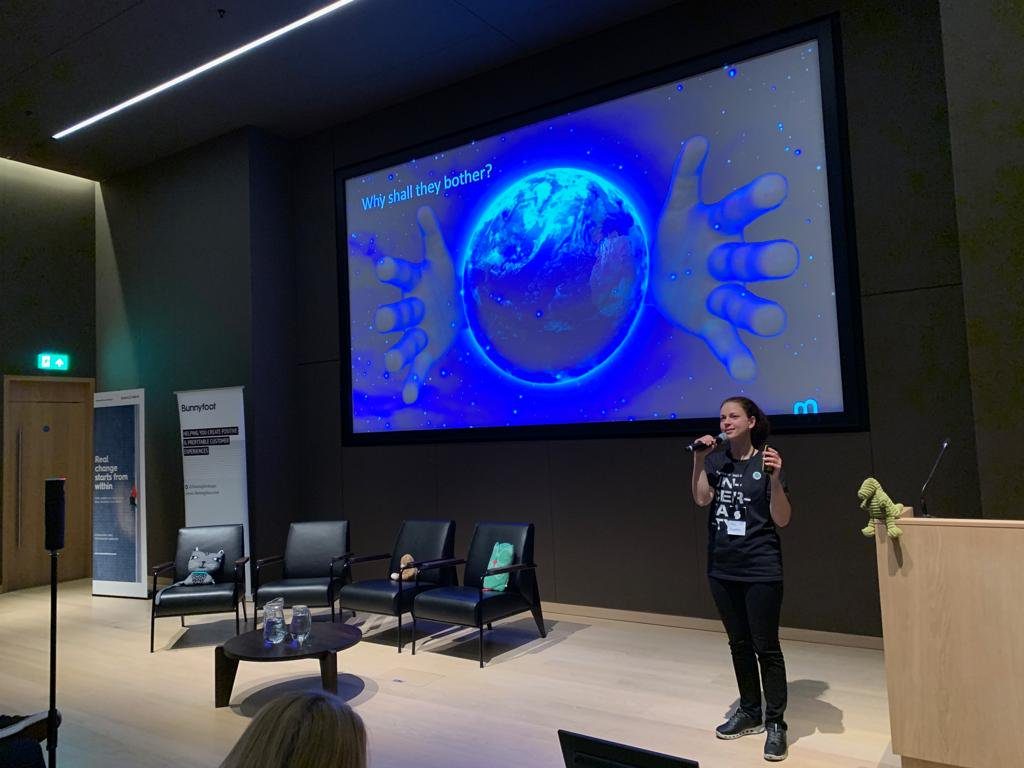Life-centred design. Planet-centred design. Sustainable UX. Lean design. Digital sobriety and digital waste. These are not fashionable trends but the industry’s response to what is happening to the planet.
We were happy to support and to play an active role in promoting planet-centred design as part of the Service Design Fringe Festival last month which placed a strong focus on sustainability. It was inspiring to see many industry peers joining the discussion and promoting sustainability in business.
Since UK Parliament’s declaration of the climate change emergency this May as well as movements like the Extinction Rebellion, we are witnessing the first shifts towards acknowledging the planet as a separate stakeholder in design processes.
As much as we love using technology, today it is accountable for 4% of worldwide carbon emissions. That is more than the entire civil aviation contribution. Recently, even the UK’s biggest independent travel magazine, Escapism, had an article on how our daily habits of searching online and sending social media messages effect the environment.
The Service Design Fringe Festival talk
Being at the forefront of digital products and services design, Bunnyfoot recognises the importance of designing planet-centred digital products and raising awareness of sustainable UX. During our talk at the Service Design Fringe Festival, titled, ‘Eco versus Ego: designing sustainable services’, we equipped the audience with some convincing digital technology statistics, digital service examples doing good and bad to the planet, sustainable UX solutions and supporting tools and resources.

What we covered
Awareness comes first: we advised the audience to assess the environmental cost of digital services: you cannot improve what you don’t know exists. Putting things into perspective, a simple webpage load emits 6.8 grams of CO2 emissions or 1 email with a large attachment produces up to 50 grams compared to an average paper letter’s 29 grams. You can track your website emissions of CO2 with this website carbon calculator or find out how green your software providers are using a CDP list.
We talked about the need for bringing everyone on board especially senior stakeholders and product owners. We showed some hardcore CO2 statistics of digital technologies which could be used in helping to convince decision makers (e.g. in 2018, online video traffic alone was responsible for more than 300 million tons of CO2). But knowing how difficult it could be to persuade people with non-business statistics, we shared other compelling reasons for shifting towards greener design:
- Think to your future generation of users (generation Z) who are ready to stand up against corporations and governments requesting transparency, traceability and sustainability
- 6 out of 17 of the UN’s sustainable development goals are on environmental issues. They are goals which soon will become regulations set up by governments. We believe UX sustainability legislation may mirror the way accessibility guidelines were introduced, initially ‘nice to have’, followed by becoming government regulations.
- Monetary benefits: Package your environmental design ideas and suggestions with monetary benefits, for example: Optimising for lower CO2 emissions equals optimising for general performance means; faster pages making users happier, they convert better and have better SEO, better UX – higher user satisfaction, lower abundance rates, less costs for customer service – better KPI, and eventually income.
- We encouraged UX and Service Design practitioners not to be afraid of asking difficult questions; does our digital service require increasing energy consumption to run it like Bitcoin or save energy like Airbnb? Does it produce digital waste like YouTube with its users’ video streaming for the purpose of music listening? Does our digital service create planet-harmful behaviours e.g. fast food home delivery which encourages people to cook less at home?
We suggested the audience could start designing greener digital services now by applying lightweight design principles such as using dark mode within design, compressing images, reducing heavy UI elements (e.g. ubiquitous carousels), reducing embedded third-party technology like sharing buttons and multiple pop-ups. Even small steps like reducing the number of videos used or reducing the quality to minimise file size streams.
We advised the audience to review new tools such as the sdfy.org toolkit as well as repurposing and adapting existing design-thinking tools such as value network maps and service blueprints.
Want to talk to us about how you can design sustainable services? We’d love to chat!
Learn more




